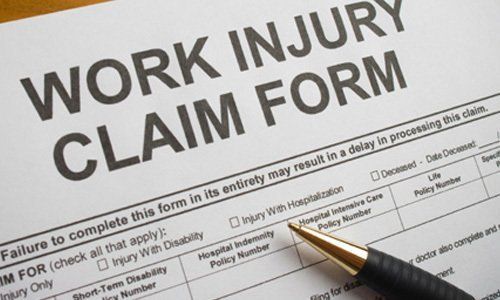How to Avoid a $100,000 Hiring Mistake

The greatest fear of most hiring managers is making an employment mistake that will result in financial loss. Finding an employee that has the physical strength to do the job is key to limiting this risk. Hiring an individual that does not have the physical strength to do the job may potentially lead to an injury. Not only does hiring someone who is not physically able to perform the job mean that an employer may have to absorb the costs of attrition, but it could risk paying out a sizable workers’ compensation claim plus the indirect costs of lost wages. All told, the cost of a single new employee who is unfit for duty could result in a $100,000 hiring mistake.
Employers are at a greater risk of a $100,000 hiring mistake if they extend an offer of employment to an individual who has suffered a previous injury. While the law prohibits employers from asking job candidates about previous injuries during the interview process, employers may receive medical information, including previous injuries, from a post offer physical strength test if this information was gathered to ensure that they are physically able to undergo such testing.
If a new hire’s physical condition is objectively measured and documented, employers can better protect themselves from pre-existing injuries and more importantly, those related impairments, making the post offer test a critical, cost-saving step in the hiring process.
The Risk of Reinjury
When new hires bring previous injuries into the workplace, they put themselves, and their new employer at risk. Over time, a previous injury could become aggravated by lifting, bending, pulling, or twisting. Or, a single workplace incident such as a slip and fall, could be the catalyst for reinjuring a shoulder, back, hand or wrist.
Having objective data on existing impairments can help protect an employer against paying claims against pre-existing conditions. Many state statutes protect employers from pre-existing injuries but they must be documented.
Job simulation vs. the Physical Capacity Profile® Test
Employers may legally make a new hire offer contingent upon the applicant's completion of a physical evaluation. To determine whether or not a job candidate is physically able to perform his or her job duties, some employers have relied on pre-placement physical exams that attempt to determine whether a person has the ability to do the essential functions of the job. Many such tests often attempt to simulate the physical tasks of specific jobs. While those simulations are capable of identifying overt job incompatibility issues, they lack the ability to objectively measure previous injuries and impairments—leaving employers vulnerable if an undocumented injury becomes aggravated on the job.
The Physical Capacity Profile® (PCP) Test has the ability to identify whether a person has the physical strength to do the job, assess existing impairments and determine baseline information for potential rehabilitation of injuries. All three of these factors help limit and decrease the risk in making a $100,000 hiring mistake.
The PCP Test: Objective Data and Reliable Results
The PCP test requires the applicant to complete a collection of multiple strength tests that are captured electronically and helps human resource professionals place an applicant in the proper job level as determined by the U.S. Department of Labor’s levels of work. The PCP Test also objectively measures related impairments based on the American Medical Association (AMA) guidelines.
Most state workers' compensation statutes require an employer to pay for workers' compensation claims to the degree that the injury or aggravation occurred at the workplace. Employers are better protected from paying the cost of an injury that occurred outside of their employment.
Establishing a reliable baseline through the PCP Test can help an employer ensure that the employee and employer are equally protected should an injury occur. Having objective baseline information available to share with a treating physician aids in effectively establishing maximum medical improvement (MMI). Without the baseline scores, employers may end up paying for additional rehabilitation treatments and lost time spent trying to meet unidentified and/or unreachable targets. The employee is protected because he or she knows what his or her pre-injury capabilities were and know that they will be fairly compensated should they not meet them.
A physical evaluation conducted using the PCP Test arms an employer with the objective data necessary to mitigate the financial impact of hiring an employee that does not meet the physical demands of the job, ensuring that if a hiring mistake occurs, the associated costs are fixed.
For more information on how the PCP Test can mitigate the financial risks of hiring physically unfit job candidates, contactOccupational Performance Corporation, or click here to locatea PCP Testing location near you.










